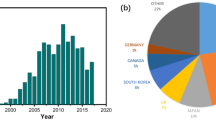Abstract
In this work, the effects of ethylene on the solid oxide fuel cell (SOFC) anode were investigated both for an SOFC single cell and an SOFC stack. Two fuels were used to observe the effects that low hydrocarbons (over C1-hydrocarbons) in the reformate gas stream have on the SOFC anode. Methane or ethylene was supplied to the electrolyte-supported SOFC anode. Using ethylene as a fuel, catastrophic degradation of SOFC performance was observed due to ethylene-induced carbon deposition onto the SOFC anode. Thus, a new methodology, termed “post-reforming,” is introduced for the removal of low hydrocarbons (over C1-hydrocarbons) from the reformate gas stream. The CGO-Ru catalyst was selected as the post-reforming catalyst because of its high selectivity for removing low hydrocarbons (over C1-hydrocarbons) and for its long-term stability. The diesel reformer and post-reformer were continuously operated for ∼250 h in coupled-operation mode. The reforming performance was not degraded, and low hydrocarbons (over C1-hydrocarbons) in the diesel reformate were completely removed.












Similar content being viewed by others
References
Singhal SC, Kendall K (2003) High temperature solid oxide fuel cells: fundamentals design and applications. Elsevier Advanced Technology, Kidlington Oxford
Steele BCH, Heinzel A (2001) Materials for fuel cell technologies. Nature 414:345–352
Eguchi K, Kojo H, Takeguchi T, Kikuchi R, Sasaki K (2002) Fuel flexibility in power generation by solid oxide fuel cells. Solid State Ion 152–153:411–416
Yoon SH, Kang IY, Bae JM (2008) Effects of ethylene on carbon formation in diesel autothermal reforming. Int J Hydrogen Energy 33:4780–4788
Cheekatamarla PK, Lane AM (2006) Catalytic autothermal reforming of diesel fuel for hydrogen generation in fuel cells: II. Catalyst poisoning and characterization studies. J Power Sources 154:223–231
Pasel J, Meiβner J, Porš Z, Samsun RC, Tschauder A, Peters R (2007) Autothermal reforming of commercial Jet A-1 on a 5kWe scale. Int J Hydrogen Energy 32:4847–4858
Ahmed S, Krumpelt M (2001) Hydrogen from hydrocarbon fuels for fuel cells. Int J Hydrogen Energy 26:291–301
Rostrup-Nielsen JR, Christensen TS, Dybkjaer I (1998) Steam reforming of liquid hydrocarbons. Stud Surf Sci Catal 113:81–95
Bae JM, Lim SK, Jee HJ, Kim JH, Yoo YS, Lee TH (2007) Small stack performance of intermediate temperature-operating solid oxide fuel cells using stainless steel interconnects and anode-supported single cell. J Power Sources 172:100–107
Kang IY, Bae JM (2006) Autothermal reforming study of diesel for fuel cell application. J Power Sources 159:1283–1290
Kim YM, Kim JH, Bae GJ, Bae JM (2008) A simulation study of carbon deposition and consequent deterioration. Proceedings of the 7th International Fuel Cell Science, Engineering & Technology Conference
Yoon SH, Bae JM, Kim SY, Yoo YS (2009) Self-sustained operation of a kWe-class kerosene-reforming processor for solid oxide fuel cells. J Power Sources 192:360–366
Lindermeir A, Kah S, Kavurucu S, Mühlner M (2007) On-board diesel fuel processing for an SOFC-APU—technical challenges for catalysis and reactor design. App Catal B: Environmental 70:488–497
Jeong JH, Lee JW, Seo DJ, Seo YT, Yoon WL, Lee DK, Kim DY (2006) Ru-doped Ni catalysts effective for the steam reforming of methane without the pre-reduction treatment with H2. App Catal A: Gen 302:151–156
Constantino S, Michael S (1985) Solid-electrolyte-aided study of hydrogen oxidation on nickel. J Catal 93:417–429
Acknowledgments
This work was funded by the Korea Electric Power Research Institute (KEPRI) and by the KAIST EEWS Initiative. This study was also supported by the Solid Oxide Fuel Cell of New & Renewable Energy R&D program (20093021030010) under the Korea Ministry of Knowledge Economy (MKE).
Author information
Authors and Affiliations
Corresponding author
Rights and permissions
About this article
Cite this article
Yoon, S., Kim, Y., Kim, S. et al. Effects of low hydrocarbons on the solid oxide fuel cell anode. J Solid State Electrochem 14, 1793–1800 (2010). https://doi.org/10.1007/s10008-010-1078-9
Received:
Revised:
Accepted:
Published:
Issue Date:
DOI: https://doi.org/10.1007/s10008-010-1078-9




